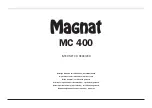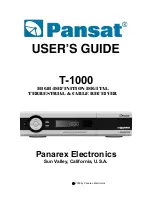
Chemical
solvents
23
22
Important information
Product damage caused by improper handling as well as damage due to
contamination are excluded from the warranty.
This device is not protected against moisture. Do not place objects that are
filled with fluids on or near the device, e.g. vases.
Open fire sources such as burning candles, should not be placed on or near
the transmitter.
Warranty
Refer to the warranty card included in the product package.
Recycling/disposal
Help us protect the environment. Please take the time to properly dispose of
your equipment including the battery. Additional information about recycling of
this product can be obtained from your community waste disposal service.
This devices adheres to the requirements of the following EU directives:
– 1999/5/EG R&TTE directive
– 2002/95/EG RoHS directive
– 2002/96/EG WEEE directive
– 2004/108/EG EMV directive
– 2006/95/EG low voltage directive
The conformity of the a.m. directives is confirmed by the CE mark on the device. CE conformity declarations
are available on the Internet.
Trade Name
FCC ID:
U94SWING1212
This device complies with Part 15 of the FCC Rules. Operation is subject
to the following two conditions: (1) this device may not cause harmful
interference, and (2) this device must accept any interference received,
including interference that may cause undesired operation.
Model Number
Digimax RF
Federal Communication Commission Interference Statement
This equipment has been tested and found to comply with the limits for a Class B digital device,
pursuant to Part 15 of the FCC Rules. These limits are designed to provide reasonable protection
against harmful interference in a residential installation.
This equipment generates, uses and can radiate radio frequency energy and, if not installed and
used in accordance with the instructions, may cause harmful interference to radio communications.
However, there is no guarantee that interference will not occur in a particular installation. If this
equipment does cause harmful interference to radio or television reception, which can be determined
by turning the equipment off and on, the user is encouraged to try to correct the interference by one of
the following measures:
• Reorient or relocate the receiving antenna.
• Increase the separation between the equipment and receiver.
• Connect the equipment into an outlet on a circuit different from that to which the receiver is
connected.
• Consult the dealer or an experienced radio/TV technician for help.









































